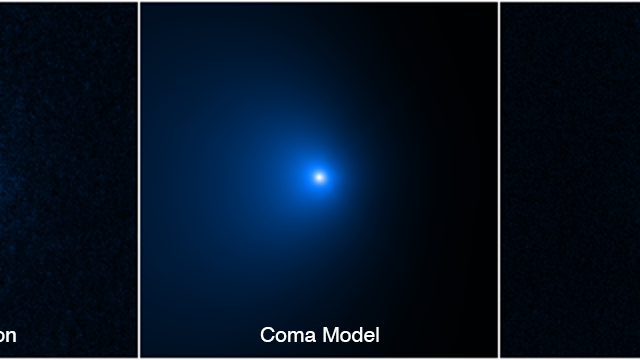A comet with a nucleus larger than Rhode Island has been on a journey toward the Sun for more than a million years. In February, researchers found that the comet is 136 km wide, and new observations from NASA’s Hubble Space Telescope now confirm that this is in indeed the largest comet nucleus ever observed, according to new research.
Travelling at 35,406 km per hour, Comet C/2014 UN271 is expected to make its closest approach to Earth in 2031. It likely won’t be visible to the naked eye, but this visit to the inner solar system will give astronomers a thrilling opportunity to observe an Oort Cloud object up close.
Comets are often described as “dirty snowballs” with a tail made up of gas and dust and a solid nucleus at their centre composed ice mixed with dust. Most comet nuclei measure a few miles across, but C/2014 UN271 has them all beat, with a nucleus that’s 50 times larger than the ones normally found in most known comets. It also has an estimated mass of 500 trillion tons, 100,000 times greater than the mass of a typical comet, NASA reports.
The comet was discovered by astronomers Pedro Bernardinelli and Gary Bernstein in 2014. At the time, C/2014 UN271 was about 4.8 billion km from the Sun, or about the distance of Neptune, the most distant planet of the solar system.
“This comet is literally the tip of the iceberg for many thousands of comets that are too faint to see in the more distant parts of the solar system,” David Jewitt, a professor of planetary science and astronomy at the University of California, Los Angeles and co-author of the new study in The Astrophysical Journal Letters, said in a statement.
Since its discovery, astronomers have closely studied it with ground- and space-based telescopes. In January, astronomers used Hubble to capture five photos of the comet. Using the combined data, they were able to determine the measurements of the comet, giving it the record of largest nucleus ever observed.
C/2014 UN271 comes to us from the Oort Cloud, a theoretical shell that surrounds the Sun far beyond the orbits of the outermost planets. Long-period comets are believed to originate from the Oort Cloud, although scientists have yet to directly observe any object in the cloud itself.
The comet follows a 3-million-year-long elliptical orbit around the Sun and has been falling towards the star for more than a million years now. It will complete its orbit around the Sun before returning to the far-off region from whence it came.
